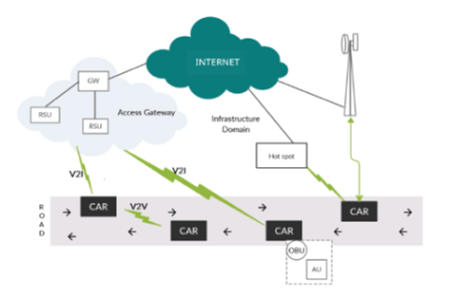


Indian Journal of Science and Technology
Year: 2021, Volume: 14, Issue: 19, Pages: 1598-1614
Original Article
Syed Mohd Faisal1, Taskeen Zaidi1*
1Department of Computer Science and Engineering, Shri Ramswaroop Memorial University, Deva Road, Barabanki, Uttar Pradesh, India
*Corresponding Author
Email: [email protected]
Received Date:13 January 2021, Accepted Date:16 May 2021, Published Date:03 June 2021
Objective: To propose an Ant Colony Optimization (ACO) based routing approach for estimating the reliability parameter of backward and forward ants. Methods: The ACO-based proposed methodology is used to predict path or route discovery in VANET. This study has discovered the best optimal path for data transmission. The forward ant movement has a minimum hop count of four for vehicle number 6. The vehicle 6 is a source vehicle, and it starts data transmission. The pheromone concentration of the entire vehicle defers and, after updating, the performance was analyzed. The best path is selected based on hop count, then a path with maximum pheromone concentration is selected. The pheromone evaporation factor is updated after a certain time interval. Findings: We have checked the reliability of the path, considering pheromone evaporation as a factor, the pheromone table is updated at a regular time interval, and the reliability parameter is also proposed for performing a task without failure in an efficient manner. We have arranged a routing table in descending order of hop count and then select the best of three paths with a minimum hop count. We search for hop count less than or equal to 5 and total pheromone greater than or equal to 17.55. We find that Ant 3 having a hop count of 5 and total pheromone concentration of 19.37. In this work, we have taken the evaporation factor as 0.5. If the transmission of a message is successful, then the reliability assigned to the edge will be 100, and for unsuccessful transmission, reliability is taken down by 20. If the reliability of the path will become 40, then the vehicle has to search for a new path. In this way, we eliminate malicious nodes for efficient transmission of message. Novelty: The performance of VANET is improved using ACO based proposed routing approach. The optimal path is selected with a minimum hop count and reliability parameter to identify the successful and unsuccessful path.
Keywords: Network security; VANET; Sybil; ACO; Pheromone Evaporation
© 2021 Faisal & Zaidi.This is an open-access article distributed under the terms of the Creative Commons Attribution License, which permits unrestricted use, distribution, and reproduction in any medium, provided the original author and source are credited. Published By Indian Society for Education and Environment (iSee)
Subscribe now for latest articles and news.